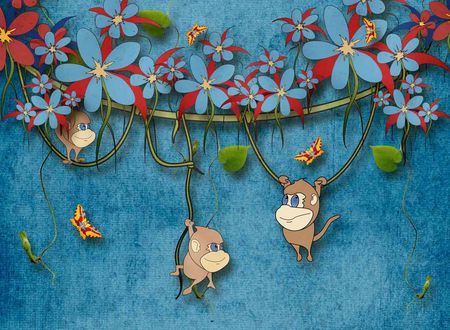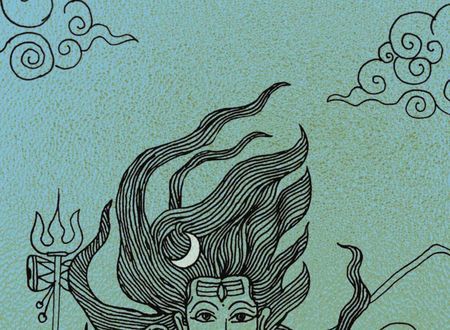One day, Buddha was having a quiet moment with his monks when a man approached him and said, “Can you please impart me the greatest wisdom in the fewest possible words?”
Buddha recognized this man’s presence and his question, and acknowledged it with a gentle smile, maintaining his silence.
After waiting for a few minutes, the visitor bowed before Buddha and said, “Thank you very much. I have received the message. I shall take your leave now.”
Shariputra, one of the more rebellious monks who never hesitated to pose questions to Buddha, asked him as soon as the visitor left, “How could this man thank you and gain something that we could not see?”
“Shariputra,” Buddha replied, “a good horse runs even at the shadow of a whip. This man was ready.”
Shariputra, however, still did not understand. When Buddha rose from his seat and left to rest for the afternoon, he checked with all the other monks if any of them understood. Apparently, none of them had. They decided to get together and request for great wisdom in the evening discourse.
They asked Buddha, “Can you also impart us some knowledge, some wisdom, some insight – never mind with the fewest possible words – without saying anything at all? Maybe one of us is also ready.”
Buddha just lifted a flower that was beside him, and held it in his hands for a few minutes. He did not say anything. He simply looked at the flower, unblinkingly. This was what Buddha did to impart the greatest wisdom, the greatest way of meditation, the greatest insight – without saying anything. He just stared at the flower, then raised his eyes and smiled. Nobody else smiled except Mahakashyapa, one of his disciples. This was Buddha’s first documented transmission of Zen. This is where it all started.
Mahakashyapa smiled because he understood what Buddha was trying to tell him, with a flower, with silence.
Anything I or anyone else says will be an interpretation of that. Have you ever wondered why we offer flowers in worship? It’s not just for colour and fragrance. If it were just for that, we could offer many other beautiful things. We could smear our deity in beautiful colours; we could spray him with perfumes and scents. But why flowers? There is a very real and beautiful reason behind it. You see, a flower is a living thing. It has life and with time it withers.
Buddha clarified further, addressing all his monks but looking at Mahakashyapa, “Everything is there, Mahakashyapa. Everything is just there. Nothing needs to be done. All you have to do is enjoy the beauty of this flower, with the mindfulness that this flower is not going to last forever – this will one day wither.”
An easy and beautiful way to experience Zen is to keep a flower at your desk at work, and perhaps one on your dining table and in your bedroom too. Don’t water it. Don’t replace it every day, either. Replace it only when it withers.
Japanese texts say that the first Zen sutra uttered by Buddha was Hana Wahraku, Ben Koku Na Haru which means that a single flower blooms, and throughout the world it is spring.
A flower in Zen is referred to as Buddha because he was born under flowers. He even died on flowers and lived on flowers. His devotees truly loved him more than they loved their own lives. He gained his enlightenment under a tree of flowers. Your mind can also be compared to one. When your mind blooms, the whole world is in spring. When it experiences autumn, no matter how much beauty there is in the external world, all feels lackluster. Everything is doomed and in gloom. Therefore, Zen says, let me simply focus on my mind. Because if I keep my mind in a state of bloom, the world is automatically beautiful.
You are a flower and you have a beautiful life. Compare your lifestyle to those of billions of people, who can’t even afford to live a basic life. Most people don’t just order anything they like when they go to a restaurant. They look at the prices on the menu and then decide what they can afford. Not everybody enjoys the luxuries of life, but you do. Remember where you are in your life and what you are blessed with already. If this is not enough, if this still seems inadequate for you to experience happiness in life, then tell me, what would make you happy? Nothing else.
Zen teaches us that happiness is not a pursuit. It’s not something we have to seek. Yes, we should have a zeal, zest and passion for life, but passion should not be taken as recklessness or an immoderate effort. This thing about passion, where you are constantly told you must have a “passion” in life, is a very new, very American phenomenon. Billions of people lived before this came into vogue, and they had no “passions” in their lives. But they were happy, quiet and content nonetheless.
Zen says, just let me be in the present moment, that even breathing is a blessing. If I can’t be happy with what I have now, I can never be happy with whatever I may have in the future. It is all but apparent that every time and under any circumstances, you will have at least one difficult person in your life. You will face at least one big challenge. And you will have to deal with at least one adversity, whether that is mental, physical, emotional, psychical, psychological or spiritual. This is very much a part of life. But in all this, to be able to flow is Zen.
In the thousand years after Buddha passed away, Zen did not really catch on. This is because people need anchors; people, they need rituals. When I say to people, “Just sit and be aware; you don’t have to do anything,” they think it isn’t sufficient. As if they have already mastered the art of sitting still! If I give them a mantra – and it is very rare for me to give someone one – they will chant it for a few weeks, maybe months, and then come back to me and say, “Okay, what’s the next step?’
This is very material thinking. There is no next step. If you can’t become one with yourself using any given path, there is no “next step” that will ever get you there. There are stages in meditation, not steps, but you don’t get to those stages by doing different things. You don’t experience those stages by going further. In fact, they are more like states than stages.
You just do what you do. You keep perfecting it; you keep championing it and then you reach that stage. As a certain martial arts master said to his student, “Don’t worry about learning ten thousand moves. You are not going to perfect that many. I am not interested in teaching ten thousand moves that you may do only once or twice. I am only interested in teaching you that one winning move that you will practice ten thousand times. That will become your perfect move.”
…
1000 years passed and in the south of India, in a place called Kanchipuram, in present-day Tamil Nadu, a child was born into a royal family. Deeply influenced by the Buddhist teachings, he set out on a remarkable path that not only revived the Zen thought but took it far and wide…
What you’ve just read is an extract from Mind Full to Mindful, my new book on Zen wisdom based on the discourses I gave in my Zen retreats in Canada and India. It’s a simple read, very Zen-like, full of anecdotes, with some humor and lovely illustrations. Since Zen is about living in the present, it is about “Now”, I don’t see any reason for you to not get your copy “Now”. I hope you enjoy this read. Here are the links:
1. Amazon.in (for readers in India).
2. Amazon.com (for all other readers).
Peace.
Swami
A GOOD STORY
There were four members in a household. Everybody, Somebody, Anybody and Nobody. A bill was overdue. Everybody thought Somebody would do it. Anybody could have done it but Nobody did it.
Don't leave empty-handed, consider contributing.It's a good thing to do today.









Comments & Discussion
7 COMMENTS
Please login to read members' comments and participate in the discussion.